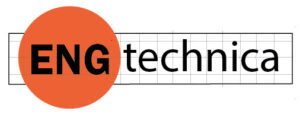
Our infrastructure projects, including the construction of roads, bridges, and utilities, are significant contributors to carbon emissions. Fifty billion tons of carbon are released into the air worldwide every year. 40% of that comes from the built environment, according to KPMG. Embodied carbon, the carbon that is used to make the concrete, steel and other materials of buildings and structures, plus the carbon used in their construction, represents 22% of all carbon emissions. Unlike operational emissions, which can be reduced over time through energy efficiency measures, embodied carbon emissions are locked in once construction is completed.
Carbon is emitted in all aspects of infrastructure, including the extraction of minerals, the manufacturing of materials, their transportation, the construction of buildings and structures, the use and maintenance, to their end of life, when building material is disposed of. Addressing carbon emissions through the full lifecycle is crucial for addressing climate change.
“We’re not decarbonizing fast enough,” says Thomas Kiessling, CTO of Siemens Smart Infrastructure. “We have to ask ourselves: can we accelerate progress and scale up our efforts?”
In a recent report, Digital Transformation, Sustainable Returns. The New Pathway of Infrastructure, Siemens suggests that getting to net-zero carbon emissions and meeting lower embodied carbon goals before it’s too late is only possible if those that design, build, operate and own infrastructure undergo a complete digital transformation.
Only by integrating advanced digital technologies to enhance data utilization and improving operational efficiency can we make progress happen at speed and scale that our present situation warrants.
Of course, this is Siemens presenting a problem for which it has a solution. Siemens has practically reinvented itself as a vendor of digital transformation applications. The company estimates the market for digital transformation market to be it estimates to be $2.5 trillion by year’s end, up 30% from last year.
Siemens gives several examples of how its digital tools have helped to decarbonize.
Southern Methodist University upgraded several buildings, including the central utility plant and mechanical systems and installed submeters and sensors. They integrated fire safety and security systems into platforms and installed an energy management program with fault-detection and demand flow optimization for chilled water plants. All this digitalization is estimated to save the university $9.5 million over the 1st five years.
Norway has the highest proportion of EVs and electric heat pumps and a great variety and number of entities that both produce and consume power. This creates uneven demand and supply and often strains the existing power network. Elvia, Norway’s largest power grid operator, has created a digital twin of the country’s low voltage grid which it says has reduced outages by 30%.
In healthcare, Switzerland’s Insel Gruppe AG also created digital twins but of a new medical center.
“This is an important area for our industry as it is fundamental to both optimizing performance and improving sustainable operas, said says Abel Müller-Hübenthal, director of Real Estate and operation at Insel Gruppe. “We were the first in our sector to transfer data successfully from our digital twin to our operation system, and we continue to build on this.”

Heineken, one of the world’s biggest breweries, made a digital twin of a typical brewery and used it to determine energy use patterns so they could optimize thermal systems, which if implemented across the board would reduce carbon emissions by 50% and save 20% of energy cost.

Datacenters may consume 1.5% of the world’s energy today, but that will grow 5X by 2030 according to Siemens. Estonia’s Greenergy outfitted one of its data centers with thousands of sensors to monitor temperature and airflow. AI-enabled technology allows Greenergy to manage the data and control cooling in real time. This has allowed the data center to operate at a power usage effectiveness (PUE), of 1.2, down from 1.6. A PUE of 1.0 is a theoretical ideal when all of the energy supplied to a data center is used for computing and nothing else, such as cooling or Iighting.
The report’s key findings:
- A little over half (55%) of the respondents think digital solutions will play a pivotal part in decarbonization but 45% do not.
- A little over half (54%) think their operations are data-driven, but 41% are taking baby steps or haven’t started walking.
- AI is seen, more than any other technology, as having the most impact on decarbonization in the next three years. Digital platforms and ecosystems were 6th.
- Not enough data is available. Over 40% don’t have data or can’t access it because data is not centralized. 30% lack consumption data.
The report is based on interviews with subject matter experts and a survey of 650 senior executives from 13 countries.

